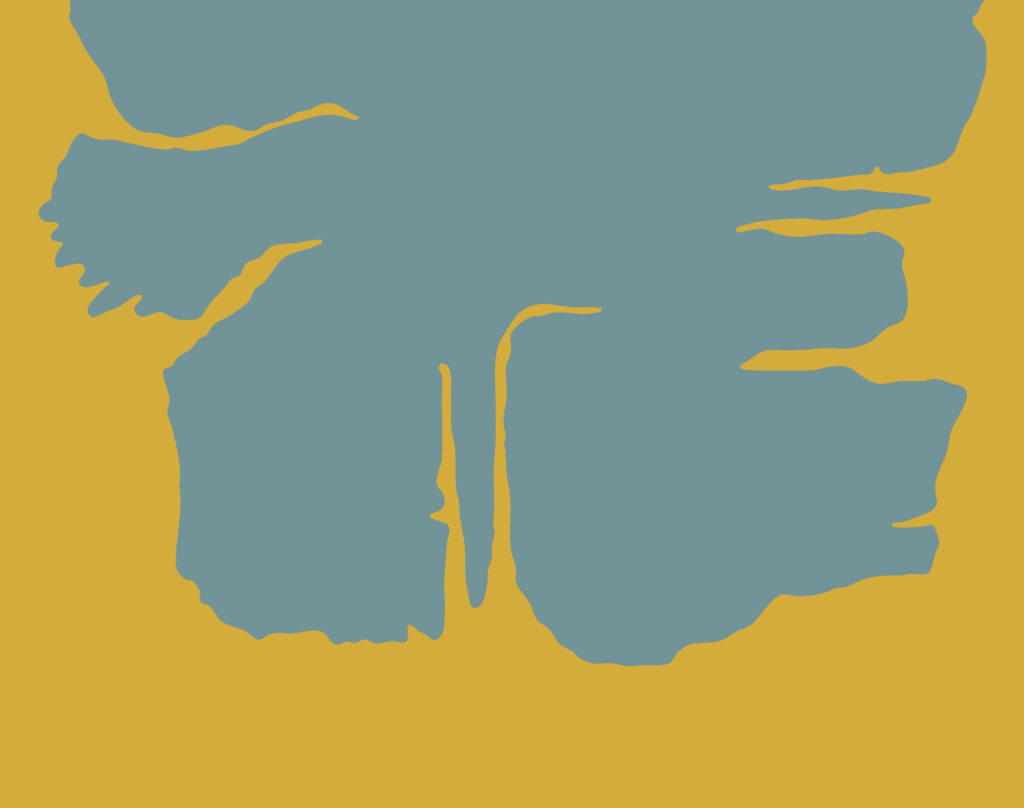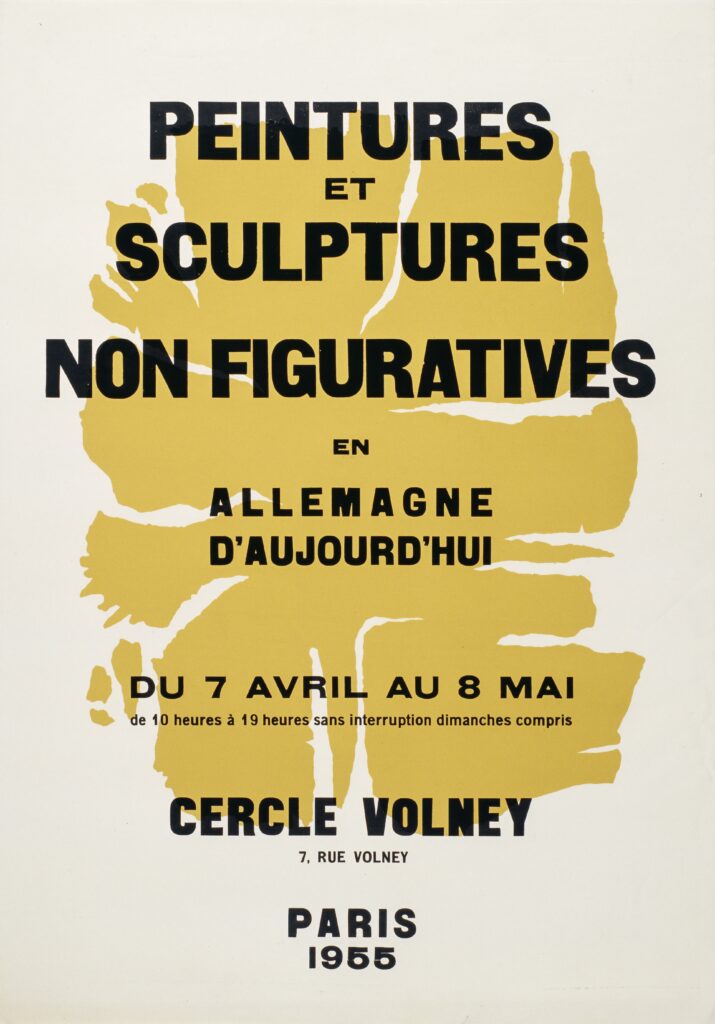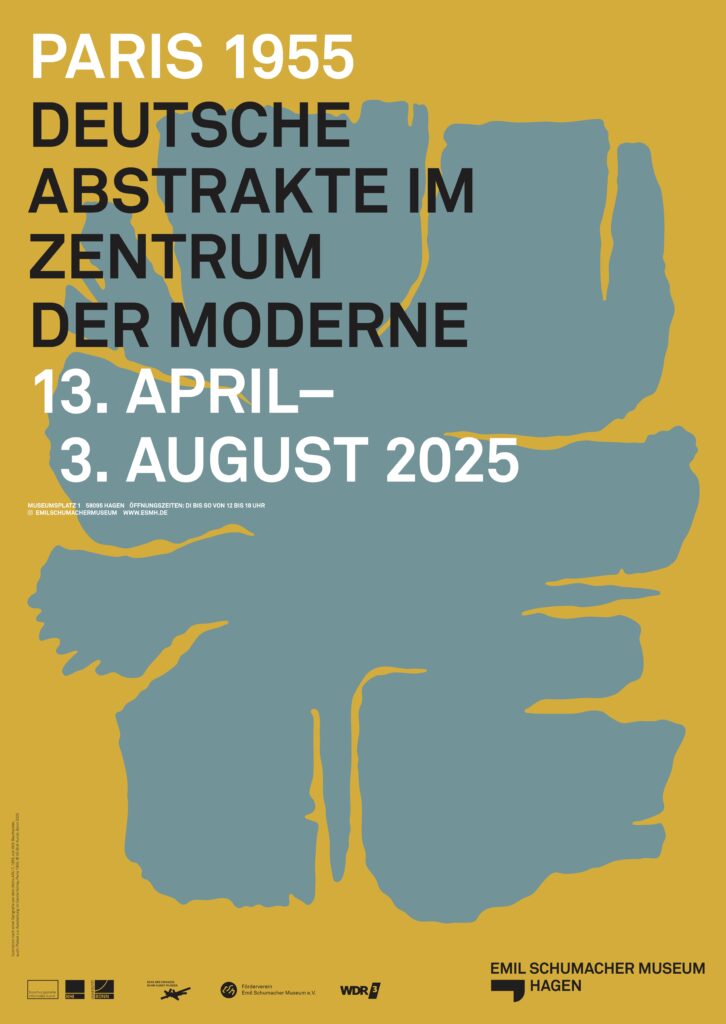Paris 1955
German Abstract Artists at the Center of Modernism
April 13 to August 3, 2025
German abstract art in Paris – in 1955! The exhibition “Peintures et sculptures non figuratives en Allemagne d’aujourd’hui” (Non-figurative paintings and sculptures in Germany today), shown at the Cercle Volney in Paris, was a real novelty and was already the subject of controversial discussion among contemporaries in Germany in the run-up to the exhibition. Today, it is considered legendary in German art history. The organizers were Parisian gallery owner René Drouin and Wilhelm Wessel, chairman of the West German Artists’ Association, from Iserlohn.
Seventy years after this memorable event, the Paris show is being reconstructed and comprehensively honored for the first time in a museum presentation. The exhibition offers visitors the opportunity to rediscover important artistic positions of the 1950s that have been unjustly forgotten today.
This remarkable exhibition, featuring 98 works by 37 abstract artists, brought together the most important artistic positions of its time at the Cercle Volney near the Paris Opera in 1955, just ten years after the end of National Socialism.
Until then, only a few German artists had managed to establish contacts with galleries and critics in neighboring France after the end of World War II. Presenting works in group and solo exhibitions in Paris, then the world capital of art, enabled emerging artists such as Brigitte Meier-Denninghoff, Emil Schumacher, and Karl Otto Götz, as well as established colleagues such as Willi Baumeister, Ernst Wilhelm Nay, and Fritz Winter, to achieve nothing less than an international breakthrough.
The exhibition at the Cercle Volney presented the various forms of abstract art that were prevalent in West Germany in the mid-1950s. The reconstruction thus creates a multifaceted picture of post-war abstract art, featuring both well-known artists and rediscovered talents. In retrospect, however, the uniqueness of the exhibition lies not only in the fact that art from Germany was shown. Much more significant is the fact that the younger participants are now considered the main representatives of Informel.
In addition to Götz and Schumacher, these include painters Fred Thieler and K. R. H. Sonderborg, as well as Brigitte Meier-Denninghoff and Norbert Kricke from the field of sculpture. From today’s perspective, their names are an integral part of the art history of post-war Germany. In 1955, their artistic expression was still revolutionary. However, the fact that informal art was still new and not openly recognized in Germany in the 1950s is evidenced by the tense history of the Paris exhibition’s creation. For example, Wessel and Drouin’s anti-hierarchical exhibition concept was massively thwarted by official bodies in Germany.
The exhibition finally opened on April 7, 1955, despite all opposition, and was enthusiastically received by the French and German press. Critics marveled at the international standard, diversity, and expressiveness of the artists from Germany. Drouin and Wessel’s contribution to Franco-German cultural exchange cannot be underestimated. They succeeded in staging an exhibition in Paris that would have been virtually impossible in Germany at that time.
For the Hagen exhibition, which was conceived in cooperation with the Research Center for Informal Art at the Art History Institute of the University of Bonn by Dr. Anne-Kathrin Hinz as guest curator together with Rouven Lotz, director of the Emil Schumacher Museum, the roles of the participating institutions and individuals are placed in their historical context. In particular, the anti-hierarchical exhibition concept of Drouin and Wessel at the Cercle Volney is at the forefront here.
The exhibition will be on display for a period of around four months from April 13 to August 3, 2025, and will be accompanied by a catalog with texts by Anne-Kathrin Hinz, Rouven Lotz, and Christoph Zuschlag—hardcover, Deutscher Kunstverlag, ISBN 978–3‑422–80342‑8, €30 (in the museum) / €35 (in bookshops) – as well as an extensive supporting program.


